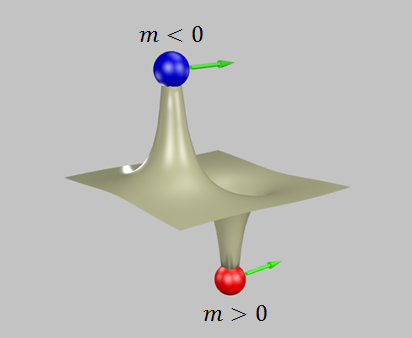More than three centuries ago, Isaac Newton in his Principia stated that for any action there is an equal and opposite reaction. The ramifications of this law of motion are now being reconsidered by a team of researchers from the University of Central Florida and Germany who recently carried out an optical experiment that one day may help lead to new propulsion systems.
“This counterintuitive process, which involves the concept of negative mass, mimics the behavior of a diametric drive,” said Professor Demetrios Christodoulides of UCF’s College of Optics and Photonics. “Even though ideas of this sort have been around for several years, they have never been successfully pursued because mass in nature is always a positive quantity.” Diametric drive refers to the possibility of a self-contained, space-propulsion engine that operates without the need for any external fuel.
The study “Optical diametric drive acceleration via action-reaction symmetry breaking” recently published on the website of Nature Physics and was part of a project with other partner universities. Mohammad-Ali Miri, a UCF graduate student in the Center for Research and Education in Optics and Lasers (CREOL), also participated in this work.
As everyone in introductory physics courses knows, Newton’s third law of motion states that the forces two bodies exert on each other are equal and opposite. As a result, two bodies of positive mass tend to accelerate toward each other when this pair of forces happens to be attractive.
However, if one of the two particles were to have a negative mass, this hypothetical arrangement would set up a system where the leading particle would constantly be “chased” by the trailing particle.
“Under these conditions, two interacting bodies will indefinitely accelerate in the same direction while keeping a constant distance between themselves,” the study says. “Of course, given that in real life the mass of a particle is always positive, no such acceleration behavior that breaks the action-reaction symmetry has ever been reported.”
In their experiment with the University of Erlangen-Nuernberg in Germany, the researchers used light pulses in a figure 8, fiber-optic platform to create the effect of attractive and repulsive forces.
“In the lab, one can create photon pulses with effective positive or negative masses,” Ali Miri said. “They [pulses] could start chasing each other until reaching relativistic limits.”
He said the concept of negative mass is not restricted to photons. Similar experiments can be performed in other settings, for example with electrons in crystalline solids.
“While a realization of a Star Trek warp drive space-propulsion engine still remains a dream, the demonstrated optical diametric drive can provide new strategies in accelerating and steering optical pulses,” Christodoulides said. “This may have an impact on how one can control light in tomorrow’s optical networks.”
The posted report can be seen by clicking here.
